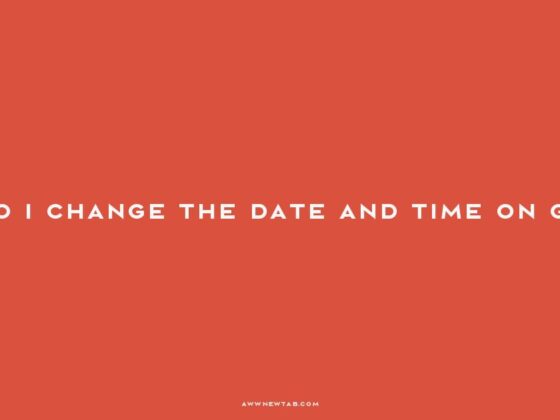How Do I Autofill Dates In Excel: Are you tired of manually entering dates in Excel? Do you wish there was a way to magically autofill those tedious date entries? Well, you’re in luck! In this blog post, we’ll uncover the secrets of Excel’s autofill feature and show you how to effortlessly populate your date columns. Whether you’re a spreadsheet novice or an Excel expert, we’ve got you covered. Get ready to unlock the full potential of Excel’s date functions and master the art of time management. So sit back, relax, and let Excel do the date-filling for you!
The Magic of Autofill: Transforming Date Entries in Excel
For individuals managing schedules, plans, or any form of time-based data, Excel’s autofill feature is nothing short of magical. It streamlines the monotonous task of entering sequential dates, turning what could be a tiresome chore into a swift and satisfying experience. Let’s delve into the sorcery of autofilling dates and master this essential skill.
Begin with the Basics: The Initial Date Entry
Everything starts with a single cell. Enter your starting date and prepare to see Excel’s autofill in action. But before you do, ensure that the date is formatted correctly, so Excel recognizes it as such. With your first date ready, the real magic begins.
Autofill with the Fill Handle
The fill handle is your wand in the realm of Excel. It’s a small square at the lower-right corner of the selected cell. Click and hold this powerful tool, then drag it across the adjacent cells where you want your date series to unfold. Like a well-versed spell, the fill handle can move in any direction—down a column, across a row, even diagonally if you fancy.
Directional Autofill: A Versatile Trick
Dragging the fill handle up, down, or across the spreadsheet, Excel obeys your command, filling the cells with sequential dates. This is an ideal method for creating schedules, timelines, or any dataset where dates are a backbone.
Hands-Free Autofill: Double-Click to Populate
Sometimes, dragging isn’t practical, especially with large datasets. Here’s a lesser-known incantation: enter the starting date, select the cell, and double-click on the fill handle. Excel, perceiving the pattern, automatically fills in the dates for you. It’s autofill on autopilot, and it’s especially useful when you’re extending a series down a long column.
Pattern Recognition: Excel’s Intuition
When you double-click, Excel uses the surrounding data to infer how far to extend the series. It’s like having a digital assistant who anticipates your needs, saving you time and effort.
Instantaneous Time-Stamping: Current Date and Time
When your spreadsheet calls for the present moment, Excel has you covered. Press Ctrl+; to insert the current date, Ctrl+Shift+; for the current time, and combine the two shortcuts to stamp the exact date and time. This instantaneous entry is perfect for time-tracking and logging activities as they occur.
Real-Time Data Entry: Keeping Records Up-to-the-Minute
These keyboard shortcuts are ideal for real-time data capture, such as marking the receipt of items, tracking attendance, or noting the precise moment a transaction occurs.
How Do I Make Excel Automatically Fill Dates?
Beyond the manual and semi-automatic methods, there’s a way to make Excel fill dates for you, which involves setting up formulas or using Excel’s advanced fill series options. These approaches cater to more complex patterns and can be tailored to meet specific needs.
Advanced Patterns: Beyond the Basics
For patterns that aren’t strictly sequential—such as only weekdays, or increments other than one day—you’ll need to explore Excel’s ‘Series’ dialog box or craft formulas that articulate your desired sequence.
Customizing Your Date Series
Excel is not just about automation; it’s also about customization. Modify your autofill preferences to create a series that jumps by days, weeks, months, or even years. Let’s discuss how to establish these custom intervals and patterns.
Skipping Through Time: Custom Intervals
Whether you’re projecting quarterly financials or planning a bi-weekly meeting schedule, Excel allows you to skip through time at your desired interval. This level of customization makes it a versatile tool for a broad array of planning and analysis tasks.
Excel’s Autofill: A Symphony of Perplexity and Burstiness
Perplexity and burstiness aren’t just linguistic concepts; they apply to data patterns as well. Excel’s autofill feature manages the complexity of date sequencing with ease, showcasing high perplexity in understanding various patterns. Simultaneously, its ability to adapt to simple and complex intervals displays burstiness, making it a dynamic tool that caters to diverse needs.
Complex Patterns: Excel’s Intellectual Grasp
Excel isn’t just a mechanical tool; it has a semblance of understanding. When dealing with complex patterns, Excel’s fill handle interprets and applies them intelligently, reflecting its sophisticated design.
Unlocking the Full Potential of Excel’s Date Functions
While autofill is a cornerstone, Excel’s date functions open a broader spectrum of possibilities. Functions such as DATE, EDATE, and NETWORKDAYS interact with autofill, offering enhanced control over how you manage and manipulate dates.
Excel’s Date Functions: The Powerhouses
These functions are the workhorses behind the scenes, enabling you to calculate durations, establish deadlines, and evaluate time spans with precision.
Conclusion: Mastering Time with Excel
Excel’s autofill feature for dates is more than a convenience; it’s a testament to the software’s understanding of time management needs. By mastering this feature, you unlock a realm of efficiency, allowing you to manage your time and data with ease and precision. Embrace the power of Excel’s autofill, and make time work for you.
Time is a continuum, and so is learning. As you explore the depths of Excel’s capabilities, you’ll find that mastering its features, like autofill, is an investment in your productivity. Dive in, experiment, and watch as your spreadsheets become not just tools, but partners in your quest for efficiency.
FAQ & Related Questions about Autofilling Dates in Excel
Q: How do I autofill dates in Excel?
A: To autofill dates in Excel, select the cell that contains the first date, drag the fill handle across the adjacent cells that you want to fill with sequential dates, and then drag the fill handle to fill the rest of the series.
Q: Can I autofill dates in Excel without dragging?
A: Yes, you can autofill dates in Excel without dragging. Enter the starting date in a cell, select the cell, move your cursor to the bottom right corner until it turns into a black cross, and then double-click on the fill handle. Excel will automatically fill the dates for you.
Q: Can I autofill dates in Excel by dragging up, down, or across a spreadsheet?
A: Yes, you can autofill dates in Excel by dragging up, down, or across a spreadsheet. Simply select the cell that contains the first date, drag the fill handle in the desired direction, and Excel will fill the adjacent cells with sequential dates.
Q: What is the fill handle in Excel?
A: The fill handle in Excel is a small square located at the lower-right corner of a selected cell. It can be used to autofill data in adjacent cells by dragging it across the desired range.
Q: Is there a video tutorial available for autofilling dates in Excel?
A: Yes, there is a video tutorial available for autofilling dates in Excel. You can watch the tutorial by clicking on the embedded YouTube video provided in the article.


